Germination of eggplant seeds depends on various factors. The average germination time is 15 days. Growing vegetables on a personal plot allows you to get your own environmentally friendly crop.
Solanaceous culture prefers well-lit places and fertilized soils. When to plant eggplants for seedlings according to the lunar calendar in 2019, in order to give plants the natural forces and energy of the earth's satellite.
Content
Features of growing crops
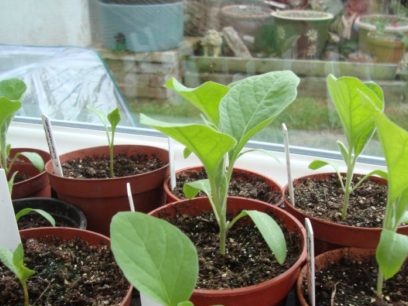 Eggplants are heat-loving plants. They are grown in greenhouse structures and in open ground. Crop dates are selected based on the climatic features of the region and lunar activity.
Eggplants are heat-loving plants. They are grown in greenhouse structures and in open ground. Crop dates are selected based on the climatic features of the region and lunar activity.
Favorable days for planting eggplants are the time of steady heat onset with heating of the soil cover of at least 15 degrees at night. Optimally, if the temperature regime of the environment is in the range between 25 and 28 degrees.
Due to adverse environmental conditions for cultivation in the Russian regions, it is important to plan according to the lunar sowing calendar when to plant eggplant for seedlings. The moon affects the physical and biological processes on Earth, including plant growth. Eggplant planting should be done with preliminary preparation of seedlings. This will increase the survival of the vegetable, strengthen immunity, increase productivity.
For efficient eggplant cultivation, the following conditions must be met:
- select quality seeds;
- plant eggplant seedlings in fertilized soil;
- pick up favorable days for planting eggplant;
- regularly care for seedlings.
The common name for eggplant is blue. In the northern latitudes, they must be sown at home, and then transplanted into greenhouses. In the middle lane and southern regions, culture should also be planted with seedlings, and then transferred to beds or in greenhouse structures.
Seedlings
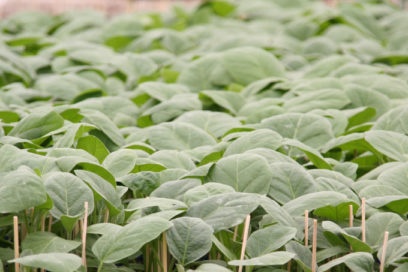 After 75 days, transplanted to greenhouses or open ground. If the vegetable has not sprouted after 16 days, then waiting longer makes no sense.
After 75 days, transplanted to greenhouses or open ground. If the vegetable has not sprouted after 16 days, then waiting longer makes no sense.
Seeds germinate at different times, which depend on:
- seed quality;
- soil fertility;
- temperature conditions;
- soil moisture for seedlings;
- recesses in the soil;
- preparing seeds.
Features of culture growth depending on the variety and region
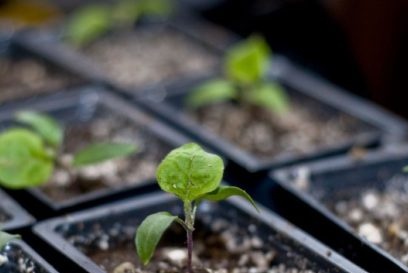 Eggplant is divided by maturity into:
Eggplant is divided by maturity into:
- early ripening - fruits can be harvested 3 months after sowing;
- mid-season - the crop is harvested after 4 months;
- late ripening - vegetables are removed after 5 months.
For different climatic conditions, you need to choose different varieties. In the southern regions, 3 species can be planted at once, so that the whole warm season can be harvested in different periods. For the European North, Urals, Siberia, choose late-ripening varieties. In the suburbs, the Leningrad region, the Middle lane you can grow mid-season varieties.
The following eggplant varieties have proven themselves positively:
- King of the North - an eggplant variety for early harvests 100 days after germination. The variety was bred by agricultural technicians for harsh climatic conditions, therefore it can be planted everywhere, except for areas of the Far North. Vegetable preferably grow in open field. In greenhouses, the plant develops worse and is prone to diseases and pest attacks. From each meter of planting, you can collect up to 15 kg of crop.
- Clorinda is a hybrid for growing in greenhouses and in open ground. Variety bred by agronomists from Holland. The vegetable is adapted to the conditions of the north. From 1 square of the area you can collect up to 10-15 kg of crop.
- Diamond is a culture for open ground with an average ripening time of up to 150 days, depending on the area of cultivation. For areas of the middle lane, the vegetable should be grown in covered structures, in the south you can plant on the beds. Width of fruits in diameter up to 60 mm. Ripe eggplants are dark brown in color. With one square meter you can collect 7 kg of crop.
- Black handsome - eggplant variety for growing in greenhouses and in beds with an average maturity of 130 days. High palatability, resistance to disease, unpretentiousness to the quality of the soil made this variety in demand in all regions. From one square there is an opportunity to collect 7 kg of fruits.
- Marzipan is a mid-season variety with a ripening period of 125 days. It can be planted both in the northern regions and in the south. Hybrid brought adapted to drought and temperature extremes. From one square of landings, you can collect up to 6 kg of crop.
After transplanting seedlings into greenhouses or open ground between the bushes, a distance of at least 60 cm should be observed. A distance of 40-50 cm should be kept between rows. Eggplants are also classified according to the height of the bushes as stunted (up to 0.5 m), mid-sized (up to 1 m), tall (up to 3 m).
Eggplant planting lunar calendar
To plant eggplants for seedlings according to the lunar calendar in 2019 is a reasonable decision in connection with the lunar influence on terrestrial plants and the processes occurring in them. As a result of many years of observations, cyclical patterns of the effectiveness of work and actions with crops were revealed, which showed that on certain days the crops had great germination and productivity.
Favorable days for planting eggplant seedlings on the lunar calendar
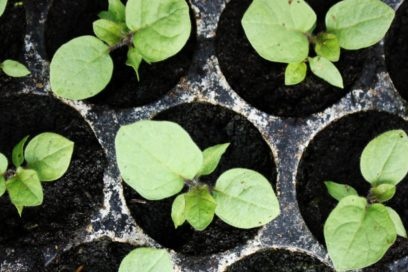 Planting eggplant for seedlings according to the lunar calendar should be carried out on favorable days and certain phases of the moon. The optimal periods for sowing seeds for seedlings:
Planting eggplant for seedlings according to the lunar calendar should be carried out on favorable days and certain phases of the moon. The optimal periods for sowing seeds for seedlings:
- February 6-8, 11-13, 20-25, 28;
- March 8-12, 15-20, 23-25, March 27-29;
- April 1-4, 6-9, 11-13, 20-21, 24-26, April 29-30.
Sowing eggplant for seedlings later than April does not make sense, since weather conditions will not allow vegetables to ripen. Seeds should not be planted in the phases of the new moon, full moon, during periods of the earth's satellite in certain zodiac constellations - January 5-6, January 21, February 4-5, 19, March 2-4, 21, 30-31, 4-6, 19 April 27-28.
When to care for eggplants on the lunar calendar
In accordance with the lunar activity, you need to care for seedlings in favorable periods.
| Event | February | March | April |
| Pick | 28 | 1-2, 10-12, 15-16, 28-29 | 2-3, 7-8, 11-12, 24-26 |
| Feeding | 1-9, 11-13, 20, 24-25, 29-30 | ||
| Watering | 6-7, 15-16, 23-25 | 5-6, 15-16, 23-24 | 1-3, 11-12, 19-20, 29-30 |
When to transplant eggplant seedlings
After sowing seeds, seedlings on the soil surface appear after 2 weeks. Before sowing, seeds must be prepared in order to increase germination, strengthen immunity, strengthen plant bushes. Planting seedlings in greenhouses and open ground is best done in accordance with the lunar calendar:
- April 2, 7-8, 11-12, 20-21;
- May 8-14, May 17-18;
- June 5-6.
Seedlings should grow in favorable conditions and with appropriate regular care for at least 75-80 days.After this period, the culture needs to be transplanted into beds or in hotbeds on dates favorable according to the lunar calendar.
Features of choosing favorable days for sowing
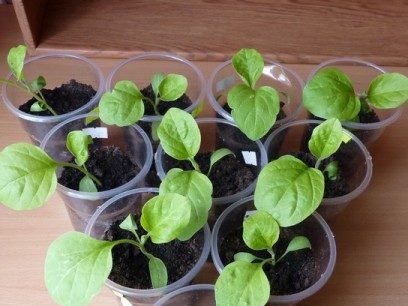 In addition to choosing favorable days for planting crops, you need to know the following aspects:
In addition to choosing favorable days for planting crops, you need to know the following aspects:
- at least 75 days must elapse between sowing eggplant for seedlings and transplanting seedlings to a permanent place. This period is necessary for the seedlings to grow stronger and grow enough to transfer to new conditions;
- It is necessary to take into account the climatic features of the planting area before moving the seedlings. If low temperatures prevail in the region, it is necessary to transplant plants into heated greenhouse structures;
- consider the ripening dates of a particular variety earlier than sowing seeds. It should not be planted in April in the northern regions eggplant culture with medium or late ripening, as the vegetable does not have time to ripen.
For example, for the Moscow Region, according to long-term observations, frost stops after June 10, and a favorable temperature for growing eggplants occurs in mid-June. Negative temperature in the region occurs after 115 days - that is, from mid-September. Thus, for growing a crop, it is necessary to select early ripe hybrids.
Seed preparation
Before sowing the seeds, you need to study the packaging, in particular the production date. The maximum shelf life of seed is 8 years. Seedlings are best sown with seeds no later than 4 years from the time of collecting the material. Sowing preparations should begin in February.
Planting material must be prepared in the following sequence:
- selection of the desired variety;
- disinfection for half an hour in an aqueous solution with potassium permanganate;
- soaking the seeds in warm water for 3 days or soaking in wet tissue until hatching.
After disinfecting, lay the seeds on a dry surface without mixing the varieties. Soaking the seeds before sowing is necessary to soften the hard peel and activate biological processes in the cells.
Soil preparation
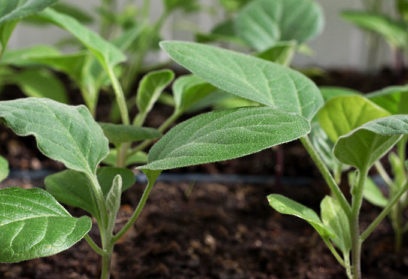 Seedlings eggplant must be grown in good soil substrate. The vegetable is demanding on the quality of the land. For seedlings, use boxes, peat pots, disposable containers made of plastic. Plants should be placed in one dish at a distance of 7-10 cm. It is better to plant one seed separately. This will facilitate the transfer process in the future.
Seedlings eggplant must be grown in good soil substrate. The vegetable is demanding on the quality of the land. For seedlings, use boxes, peat pots, disposable containers made of plastic. Plants should be placed in one dish at a distance of 7-10 cm. It is better to plant one seed separately. This will facilitate the transfer process in the future.
The soil should be light and nutritious, contain components and substances valuable for plant growth. It is recommended to make the soil in advance. Mix in large capacity:
- 2 parts of organic matter (rotted manure, litter, compost);
- 1 part of sand;
- 1/3 part of wood ash;
- 1/8 part of superphosphate;
- 1 part humus.
Thoroughly mix all the components and fill the containers under the seedlings after 7 days. Eggplants do not tolerate transplanting, so crops are best done taking into account the movement of the seedling along with the ground for seedlings.
Sowing seeds
The nutrient soil with fertilizer must be periodically watered so that the substrate is not overdried. Before sowing seeds, place containers under the seedlings in the accessibility zone. Do seeding in the following sequence:
- place prepared, disinfected seeds in the planting zone;
- in each container with soil, make 2 recesses with a depth of half a centimeter;
- place a seed in each hole;
- sprinkle the seeds with planted soil;
- water using a spray gun;
- cover all containers with plastic or cling film to create a greenhouse effect.
It is important to arrange the seedlings after hatching the sprouts in a well-lit, warm place.
Why eggplants did not come up
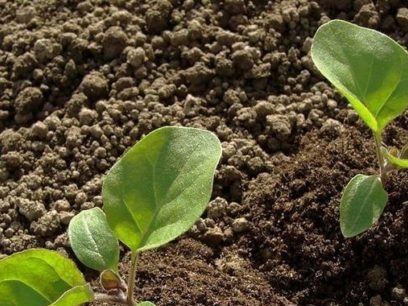 If the seedlings have not sprouted, you need to analyze your actions to find possible errors. The most common causes of poor eggplant germination or seedlings absenteeism are:
If the seedlings have not sprouted, you need to analyze your actions to find possible errors. The most common causes of poor eggplant germination or seedlings absenteeism are:
- planting dry seed. Seeds must be kept in water to soften the peel and awaken resources for growth;
- sowing overdried material. In the process of soaking seeds, you need to ensure that moisture does not evaporate;
- sowing low-quality seed. Expired material does not germinate;
- poor soil nutrients. When laying a small amount of organic fertilizer, seeds germinate worse;
- adverse temperature conditions. Containers with seeds on a cold windowsill will not germinate. Plantings should be moved to a warm, illuminated place and covered with polyethylene. Under the pots, you need to place cardboard or other material to prevent freezing from below.
If the timing still allows, make new eggplant crops with the selection of early ripe varieties. When landing, consider all errors.
Eggplant transplant
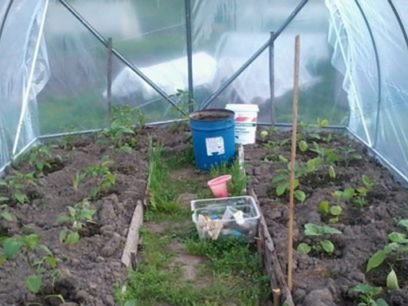 Before transferring the seedlings to the growing place, it is necessary to carry out hardening measures.
Before transferring the seedlings to the growing place, it is necessary to carry out hardening measures.
Before planting eggplant in open ground or an unheated greenhouse, they need to be hardened. Seedlings it is time to transplant, if the plant already has 3-4 leaves. To adapt the culture to cooler conditions, transport boxes and pots with seedlings to cool rooms or to the street. It is important that the temperature is at least 15 degrees. Every day, increase the time spent by eggplant in a new environment by 1-2 hours. This period should last a week.
A transplant into greenhouses is done when the temperature in the structure in the daytime is at least 22 degrees. In the middle lane and south, eggplants are transplanted in May, and in the northern regions in June. For open ground, transplantation dates need to be shifted later by 1-2 weeks.
Plant seedlings in the following sequence:
- dig up soil on 20-25 cm;
- add organic top dressing (humus, rotted compost, mullein), add wood ash;
- mix the soil and disassemble;
- make markings for planting bushes at a distance of 60-70 cm from each other. Between the rows should be at least 40-50 cm;
- dig small holes with a depth of 10 cm;
- gently shake the seedling out of the pot with the soil;
- place the seedling in the prepared hole;
- sprinkle the root system with earth;
- pour plantings with warm, settled water using a sprinkler.
Eggplant Care
Productivity, maturity and growth rate of the crop depends on regular care. After transplanting seedlings, it is required from the first day to take a number of measures that will contribute to the cultivation of strong seedlings with enhanced immunity to diseases and pests:
- monitor the temperature of air and soil;
- ventilate seedlings, but do not allow drafts;
- water the aisles using a sprayer;
- Protect seedlings from direct sunlight. Before seedlings, curtain a cloth or install a screen of white paper;
- do not overheat. Temperature conditions above 30 degrees are harmful to the culture;
- watch for moisture. Do not overfill the crops, as this leads to rotting of the roots or seeds;
- weed in a timely manner. Weeds compete with seedlings and take nutrients, moisture, light from eggplant;
- loosen the soil at least 1 time per week. This is necessary for effective irrigation and enrichment of the soil with oxygen.
- do not let the bushes stretch out strongly towards the light. This will make the seedlings weak and fragile. Pots with seedlings must be regularly rotated.
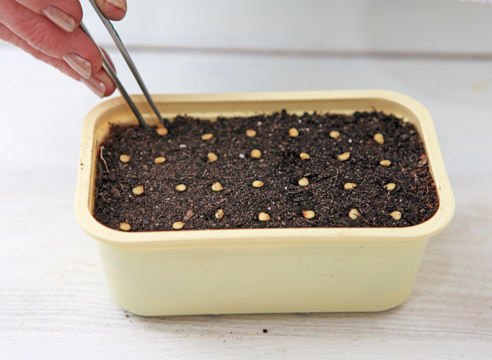 You may be interested in:
You may be interested in:Growing your own crop allows you to get your own environmentally friendly vegetables. To decide when to plant eggplants for seedlings in 2019 according to the lunar calendar, study the patterns of the influence of the earth's satellite and evaluate the climatic features of the region. When you consider the recommendations for planting, transplanting and care, your reward will be ripe juicy fruits with excellent taste.

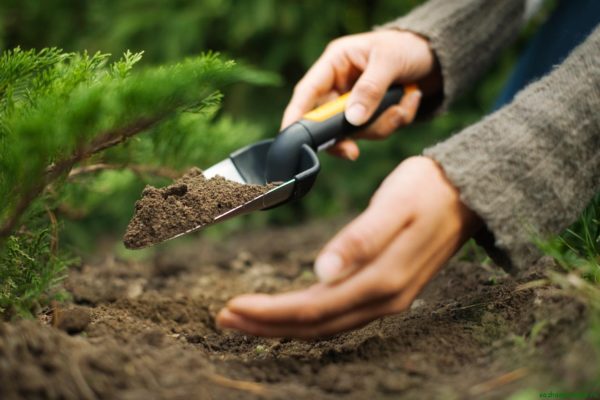 Sowing calendar for August 2024
Sowing calendar for August 2024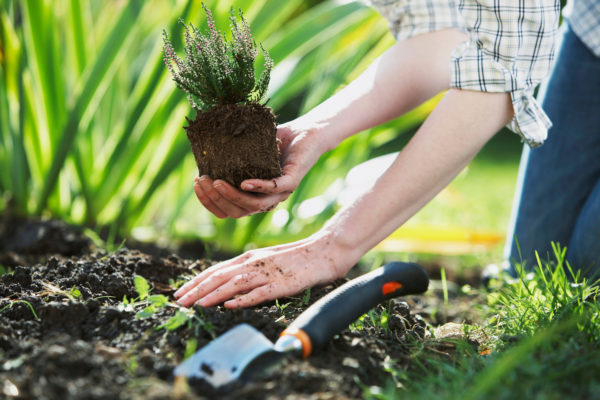 Sowing calendar for June 2024
Sowing calendar for June 2024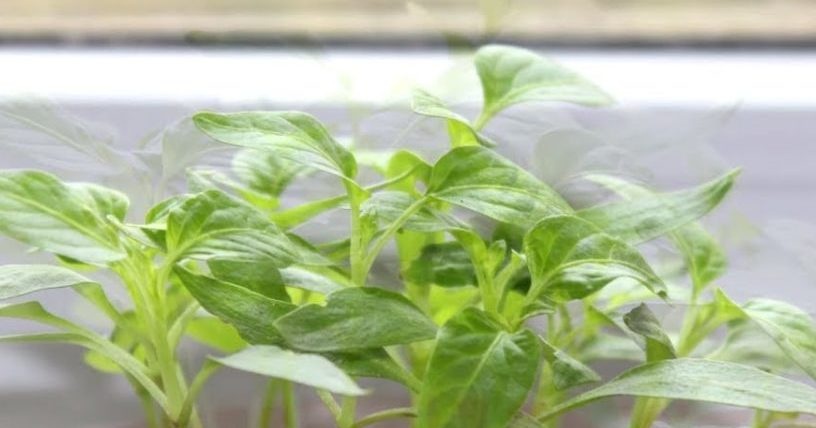 Sweet pepper (Bulgarian) - planting dates for seedlings and the lunar calendar 2024
Sweet pepper (Bulgarian) - planting dates for seedlings and the lunar calendar 2024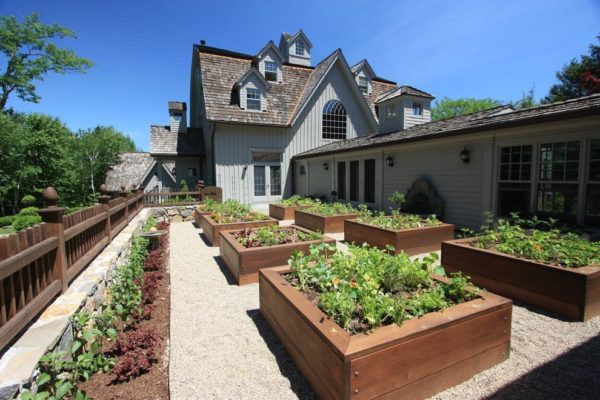 Boarding days in June 2019: favorable days
Boarding days in June 2019: favorable days